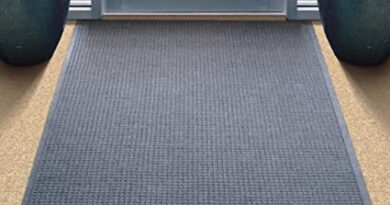The Benefits And Drawbacks Of Popular Bathroom Countertop Materials
Traditionally, bathroom counters were made of ceramic tile, plastic laminate, or an innovative substance known as cultured marble. Cultured marble was crushed limestone bound with synthetic resins (or granite, or onyx). Better-looking and performing alternatives have mostly supplanted this early manmade stone. Laminates and ceramic tiles are common bathroom countertop materials, but today’s versions are different.
While stainless steel and wood bathroom countertops are available, the majority are made from one of these seven materials.
Laminate
If you see unsightly, metal-edged laminates, explore new items or alternative producers. Laminates can mimic granite, wood, marble, leather, or stainless steel.
Pros
- Laminates are a low-cost countertop material.
- A wide range of colors and patterns are available.
Cons
- Bespoke styles are not DIY-friendly and necessitate the services of a custom fabricator.
- Laminate countertops are thin and light, lacking the “heft” of other materials.
Porcelain/Ceramic Tile
Ceramic, porcelain, or glass tiles are conventional countertop materials in traditional decor, but they’re also utilized in stylish, modern forms, especially porcelain. Clay tiles are glazed and fired to harden. Porcelain is baked pottery manufactured from finer clays. Porcelain is a robust and dense flooring and countertop material. Porcelain can mimic wood or leather for design alternatives.
Glass tiles aren’t ceramics, yet they’re put like ceramics and offer additional design options.
Pros
- Ceramic tile installation is a simple do-it-yourself project.
- Among “premium” countertop options, tile is quite affordable.
Cons
- The tile is brittle and may shatter when struck.
- Grout lines can easily stain and discolor, necessitating periodic cleaning and resealing.
Solid-Surface
Acrylic and polyester particles are resin-bonded to simulate stone in solid surface countertops. They can be shaped into all-in-one countertops with sink basins. Manufacturers provide dozens of hues and styles. More consumers are choosing “faux stone” countertops for their bathrooms over “cultured marble” plastic. Solid surface is presently a mid-tier material between laminate, genuine stone, and quartz.
Pros
- Molding solid-surface material into seamless counters with integrated sink basins is possible.
- Material is easy to clean, stain resistant, and sandable.
Cons
- The “stone-look” appearance is man-made and less appealing than natural stone.
- DIY options are limited, as solid surface materials can be difficult to come by.
Concrete
Concrete countertops are gaining popularity. As a countertop material, concrete is pigmented, highly polished, and can be texturized, unlike sidewalk slabs. Some installers use tile, stone, or polished glass during installation.
Pros
- Concrete is a popular countertop material and a great selling point for a house.
- Countertops are strong and long-lasting.
Cons
- Concrete countertops must be made and installed by professionals.
- If cracks appear, the only option is a replacement.
Glass Crush
Crushed glass countertops are growing fashionable. These countertops are inset recycled glass in acrylic or concrete. Unique countertops give any bathroom a designer look. Custom-made smashed glass countertops are unique. Traditional or modern, depending on the glass.
Pros
- These are tough, durable countertops, particularly those made of acrylic.
- Acrylic-based materials are simple to clean.
Cons
- Concrete forms are prone to brittleness.
- Countertops cannot be repaired where cracks appear (which is more likely with concrete).
Quartz
Quartz countertops are made of 70 to 90% crushed quartz and other stone minerals mixed with resins and colors. Some look like natural stones.
Pros
- Engineered quartz can be formed into a variety of shapes, including countertops with built-in sink basins.
- You can choose from different colours and styles.
- The coloring is more consistent than in natural stone.
- These countertops are more durable than natural stone slab countertops.
Cons
- These are some of the most expensive countertops available.
- Seams are occasionally visible.




